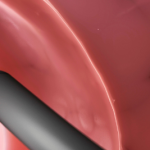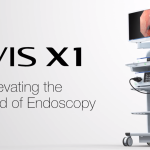QUALITY AND HOW IT IS EMBEDDED IN THE DEC
Quality care and service underpins the key goals of the DEC management and staff. Together we strive to deliver the highest quality care to our patients with optimal outcomes and service delivery in an environment that is conducive to our patient’s needs.
The Australian Commission on Safety and Quality in Health Care developed a comprehensive tool (National Safety and Quality Health Service (NSQHS) standards) for all providers of healthcare to review and rate the quality of care being delivered. The primary aim of the NSQHS is to protect the public from harm and improve the quality of health care. They describe the level of care that should be provided by health services and the systems that are need to deliver such care.
The first edition was developed in 2011 and facilities assessed against the criteria from 2013. Improvements were reported in several areas including healthcare associated infections decreased; in hospital cardiac arrest decreased; adverse drug reactions and medication histories are better documented and less antibiotics are prescribed due to improvements in antibiotic stewardship.
The second edition of the NSQHS standards (released in November 2017 and facilities assessed against it from January 2019) addresses gaps identified in the first edition, including mental health and cognitive impairment, health literacy, end of life care, and Aboriginal and Torres Strait Islander health. It also updated the evidence for actions, consolidates and streamlines standard and actions to make them clearer and easier to implement, and reduces duplication. There are eight standards and 148 actions, while the first edition had ten standards and 256 actions. All the elements in second edition must be implemented by health service organisations (in first edition many items were developmental and organisations had to show how they were working towards implementing them rather than having to have fully implemented them). Despite the decrease in the number of standards and actions the requirements are more onerous and far more involved (some actions have 7-8 separate requirements).
The DEC has successfully achieved and maintained full accreditation status through Australian Council of Healthcare Standards (ACHS) since early 1990s. We have certainly seen many changes along the way and adapted our quality program to aid improved outcomes in our own practice.
It is important to understand how quality is used in the DEC and the outcomes we aim to achieve for every patient. This is a summary of how the DEC has embedded the NSQHS standards into our quality program and welcome any feedback or questions you have along the way.
 Standard 1 Clinical Governance
Standard 1 Clinical Governance
This standard requires the DEC to have robust policies and procedures in place to ensure and confirm all matters involving patients and their care are reviewed and reported to validate and improve care delivery and patient outcomes.
We have policies and procedure manuals for our nursing staff which clearly define the requirements for care delivery. All nursing staff are required to read and understand the contents of the manual no less than annually and where new policies or procedures are developed specific education is given to the staff to ensure they have a thorough knowledge of the changes/new policy.
If for any reason there is anything out of the ordinary for any patient we report the details via our incident reporting system which records incidents, accidents, complications, transfer and near miss data. Staff fill out a form and give it to the DON (Director of Nursing) or Executive Manager (EM). We review, risk rate and if it does not require immediate action we record it in a register for review by other committees.
We have four major clinical committees who deal with all matters related to patient care. They are Medication Safety Committee; Infection Control Committee; Total Quality Management Committee and finally the Medical Advisory Committee meeting. Medication Safety deals with medication issues/changes/data and Infection Control deals with any infection control issues/changes/data and both feed to Total Quality Management Committee. TQM reviews all incidents, accidents, complication, transfer and near miss reporting as well as any issues from the other two committees. TQM also reviews external benchmarking; internal reporting of data and any other items directed for the Committee’s review. The TQM decides which items are fed to the Medical Advisory Committee meeting. The MAC is the high end clinical meeting with reporting requirements under the Private Health Facilities Act 2007 and Private Health Facilities Regulations 2017. All DEC credentialed doctors (those who have been approved to work at the DEC) are invited to attend the MAC meeting (they are required to attend at least one meeting per year as part of their accreditation with us) and any doctor who has an incident, accident, complication, transfer or near miss for review by MAC is required to attend. This ensures peer review of patient matters and that all matters are addressed according the best practice.
The Medication Safety Committee, Infection Control Committee and Total Quality Management Committee meet quarterly. The Medical Advisory Committee meets six monthly unless an extraordinary meeting is required in the interim.
 Standard 2 Partnering with Consumers
Standard 2 Partnering with Consumers
This standard requires the DEC to include consumers (can be patients; potential patients; staff; doctors who work with us) in reviewing how we provide care to our patients to ensure we involve patients in their own care.
We distribute patient satisfaction surveys to our patients between October and December annually together with smaller surveys throughout the remainder of the year. The results from these surveys are invaluable to assist us in reviewing and improving our practices.
It is very important for us to ensure we deliver information to our patients in a way that is clear and they can understand. It is for this reason we ask our Consumer Focus Group to review any changes we make to our information for patients prior to distributing. The clarity we achieve through this external review ensures we are able to provide our patients with relevant information in a format they can understand.
Our staff are also our consumers and we survey them once a year to assess the employee satisfaction. We have achieved excellent results over many years (we have a large portion of our staff who have been employed by DEC for over 10 years) and this is reflected in the employee satisfaction results.
We survey our visiting doctors in the same way – we want to know what they expect from us and whether we are delivering on their expectations.
We welcome feedback at any time from our patients/carers. We have a feedback form available for patients or their carers to complete – where a compliment is received we distribute for all staff to see – where a complaint is received we record the complaint in a register; investigate the complaint and involve the complainant in the review process.
We have all been consumers and know when we receive good service and when we do not. Identifying areas for improvement is seen as opportunity at the DEC not condemnation. We are always striving to improve and with the assistance of our consumers we will continue to make the necessary changes to make those improvements possible.
 Standard 3 Preventing and Controlling Healthcare-Associated Infection
Standard 3 Preventing and Controlling Healthcare-Associated Infection
This standard is really the checklist to ensure the DEC is following (to the letter) the requirements to ensure the safety of our patients through stringent infection control policies, procedures, audits and reviews. As we know there are instances where patients go to hospital, pick up an infection which results in either a longer stay in hospital; long-term complications or even death. Many of these infections can be avoided and this standard outlines the framework for ensuring we keep our patients as safe and healthy as we can through maintaining our infection control standards.
Our nursing staff are all members of GENCA (Gastroenterological Nurses College of Australia). This avails staff of current guidelines for infection control and best practice.
Included in this standard is antimicrobial stewardship (AMS) (that is managing the administration of antibiotics). AMS is a protocol to define when antibiotics should be prescribed and what types of antibiotics are the most effective. Over-prescribing of antibiotics has decreased their efficacy over time and we all know the importance of antibiotics in treating infection. We want as many antibiotics to be effective and safe as possible. The DEC follows the AMS protocols of St Vincent’s Private Hospital. We only stock one antibiotic in our drug store (this antibiotic is recommended by GESA (Gastroenterological Society of Australia)).
Hand hygiene is accepted as the simplest way to keep patients free from hospital acquired infections and the DEC audits staff numerous times per year to assess our compliance with the five moments of hand hygiene. Our audit data is submitted to Hand Hygiene Australia for comparison to other facilities. The DEC has not recorded any hospital acquired infections from non-compliance with hand hygiene practices.
Another way of keeping our patients safe is to adhere to best practice guidelines for cleaning our endoscopic equipment and where possible using single use items rather than reusable items. We have highly skilled cleaning technicians at the DEC and they are all credentialed with Olympus for cleaning Olympus equipment; credentialed with Soluscope for reprocessing scopes according to the manufacturer’s guidelines; skilled in microbiological testing of our endoscopic scopes and Soluscope reprocessing machines to ensure and validate the work practices in the cleaning room and to demonstrate compliance with all reprocessing requirements. Any identified growths on microbiological testing results in the isolation of the piece of equipment; it is re-cleaned and retested and only once a negative result is achieved is the piece of equipment returned to the fleet for use on patients.
All our nursing staff and cleaning technicians are tested no less than annually on infection control protocols covering all aspects of clinical care and endoscopic equipment.
We work closely with an external infection control consultant to ensure compliance with requirements and currently the implementation of AS4187:2014 Reprocessing of reusable medical devices in health service organisations.
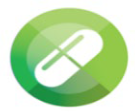 Standard 4 Medication Safety
Standard 4 Medication Safety
This standard mandates the requirements for procurement, supply, storage, administration and monitoring medications used in the DEC.
As mentioned earlier re antimicrobial stewardship the use of antibiotics is closely monitored. There is a strong emphasis on clinicians following the AMS protocols to better manage patient care.
We have a Medication Safety Committee that monitors all things medication.
All nursing staff are educated on reviewing patient medications; allergies and adverse drug reactions. This information is relayed to the clinical staff who take over the management of medications during the episode of care.
The supply and storage of medications is highly regulated with a drug licence being issued to the facility from the NSW Ministry of Health in accordance with Poisons and Therapeutic Goods Act 1966 and Poisons and Therapeutic Goods Regulation 2008 (Clause 167). The requirements for storage and dispensing all medications but especially highly addictive drugs is regulated with audits conducted by external pharmacist and accreditors at regular intervals. The reporting of dispensing is also very proscriptive and audits on drugs books are completed daily.
All our workstations have an electronic version of MIMS (Monthly Index of Medical Specialities) available for clinicians and nursing staff. This tool allows the user to identify the drug (generic and speciality name); usual dosage; interactions with other medications and any other relevant information. This ensures the clinician is fully informed prior to prescribing medications. Staff are also able to access patient information statements on medications to give to patients so they are aware of the medication; its purpose and any potential side effects.
All medications are safely locked away in drug safes and are only accessible by the floor coordinator for a shift or the DON. No other staff have access to the keys.
The storage area for all medications is locked after hours and only accessible by keypad.
Staff are required to pass a medication calculation test not less than annually.
 Standard 5 Comprehensive Care
Standard 5 Comprehensive Care
This standard purpose is to ensure the care provided to the patient meets their individual needs. It targets risk of harm is prevented and managed for each admission.
Comprehensive care starts with the admission process where we identify the individual patient’s needs. These can include having someone at home to care for them; whether there is an increased falls risk; assessment of their skin integrity – that is are they likely to get a skin tear during their stay in the DEC; pressure injury risk; is there a risk to their cognitive health – do they have an underlying condition which could affect them with anaesthetic; or another potential issue which we should be aware of. All these things can alter the care of the patient and to ensure the best possible outcome we need to identify and work with the patient or their carer to alter our care to accommodate the patient’s physical, mental and cognitive health needs.
It is important that all persons involved in the patient’s care is aware of any possible increased risks to the patient. Clear dissemination of all relevant patient information is crucial to ongoing care.
As we are co-located on the St Vincent’s campus we have the added advantage of being able to access services to best manage identified risks thereby increasing the potential outcome for the patient.
This standard also addresses the special needs of our indigenous population and the inherent risk for them. The DEC has been able to demonstrate over an extended period of time that the number of indigenous patients who use our services is very low but that does not exclude us from being aware of their needs and working with them and their community to ensure we contribute to their specific needs.
Health literacy is crucial to ensure our patients fully understand all the information we provide to them. We regularly review our documentation, with the help of our Consumer Focus Group, to ensure all our documents are clear, easy to read and in a format that suits our patients. We encourage our patients to speak to us if they need any clarification of any of our information. We are working towards improving the health literacy tools we have available for our patients.
End of life management is another area which is dealt with very closely in this standard. As a day hospital we do not directly deal with end of life management – however we do accept end of life directives although we do not act on the contents. Our clinicians are advised and the patient is made aware of our protocols for life support.
 Standard 6 Communicating for Safety
Standard 6 Communicating for Safety
This standard defines the importance of communicating at all times all things relating to the patient; their care and essential documentation in the patient medical record. Typically a patient will be seen by a number of different staff during their admission and treatment. It is imperative that all those staff are aware of the patient’s previous and current medical history; any areas of concern from the admission process and any special requirements. These all need to be documented clearly in the patient medical record. Some things are especially highlighted like medical allergies or adverse drug reactions.
Staff undergo extensive training to ensure they use universally accepted methods for recording in the medical record. We audit our medical record documentation as part of our external benchmarking schedule and areas of deficiency are highlighted and education sessions developed to improve staff compliance. Where changes are made to our recording tools (the admission paperwork) staff received education on the changes prior to introduction of the changes.
We have policies and procedures in place to ensure any patients transferred to other facilities have copies of our records accompany them. This includes a copy of the procedure report which each of our doctors produce immediately following the procedure. A copy is given to the patient and a copy sent to the referring doctor(s). This ensures the patient and other care givers are aware of the treatment provided and planned after care. Patients are also given how to care for themselves instructions (verbal instructions are given as well) to ensure patients know what to do if they have any issues after they are discharged.
We are now able to upload procedure reports to My Health Record for those patients who have elected to take part in that initiative. This allows other doctors who care for the patient can see (with the patient’s permission) the procedure report.
A wristband is printed for each patient and attached to the wrist of the patient during the admission process. Our wristbands comply with the standard of three identifiers (name, date of birth and medical record number).
Prior to the procedure starting our nursing staff perform “time out” which is a universally accepted protocol to make sure the patient who is about to undergo treatment is the correct patient, seeing the correct doctor and having the scheduled procedure. This is recorded in the patient record.
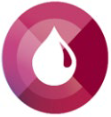 Standard 7 Blood Management
Standard 7 Blood Management
The DEC has an exemption for this standard as we do not treat patients who are receiving blood or blood products at the time of admission. We do accept patients who are to have a transfusion before or after their admission to us but not during. The reason for this is the monitoring of patients receiving blood or blood products is highly skilled and requires extensive training. None of our nursing staff have undergone this training and given the infrequent need for us to see patients who are being transfused, the skill would be lost/diminished through infrequency of use.
We do arrange for cross match for blood to be given but do not take any further part in the patient care involving blood or blood products.
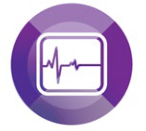 Standard 8 Recognising and Responding to Acute Deterioration
Standard 8 Recognising and Responding to Acute Deterioration
This new standard which pulls together several areas of first edition, deals with the possibilities of deterioration in the patient’s condition. These include physical, mental and cognitive deterioration.
This process starts for us at admission. Our comprehensive medical history form and admission paperwork allows staff to get a clear picture of the patient’s overall general health and also any areas of concern. Our staff conduct, during the admission process, several checklists which look at things like falls risk; skin integrity; pressure injuries; cognitive ability together with blood pressure and, if appropriate, blood sugar levels for diabetic patients. A review of medications is completed as well. Where appropriate we ask a family member or carer to sit in on the admission for frail or unwell patients. This allows us to ascertain from that person if the patient is their “normal” self and this is revaluated after the procedure (anaesthetic can alter any patient’s cognitive capabilities or trigger physical responses).
All our staff have undergone training with the Security Department from St Vincent’s Hospital on how to trigger a code black (physical threat) to security. We have three duress alarms in the unit and staff can press the alarm without drawing attention to the trigger. Staff also wear a cheat list on the back of our security id badge which identifies which emergency to trigger in which situation. As you can imagine we do not have many emergencies but given the potential for reaction to anaesthetic it is important for staff and the patient that we can react and manage the situation safely.
Post procedure our nurses work through another checklist to assess the rate of recovery post anaesthetic. A slow recovery could be indicative of an altered state (not just from anaesthetic). Policies and procedures are in place to guide staff to ascertain if there is any impairment. Staff receive annual training on how to manage the deterioration of a patient.
Being co-located on the St Vincent’s campus gives us direct access to mental health services together with specialist geriatric and other medical specialities should any of our patients require additional care after their admission with us.

